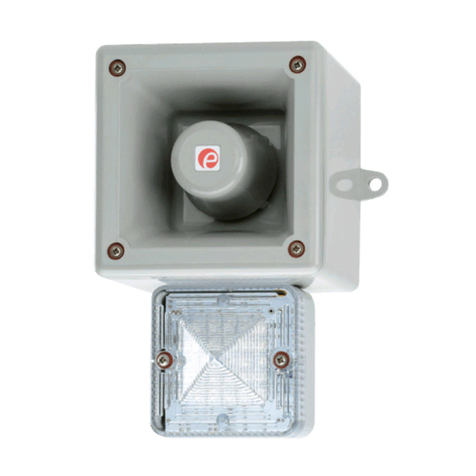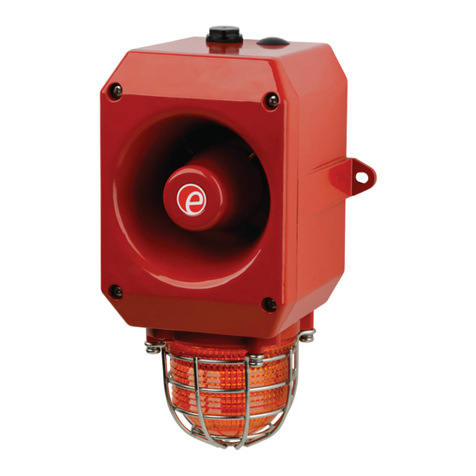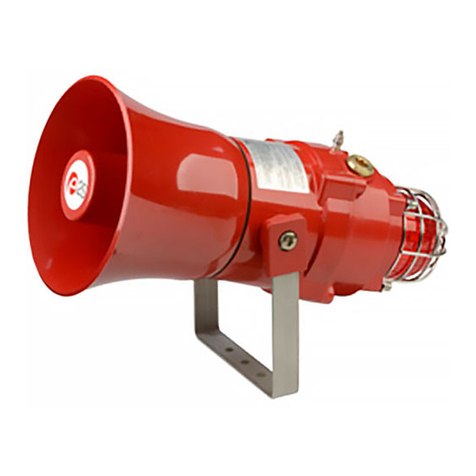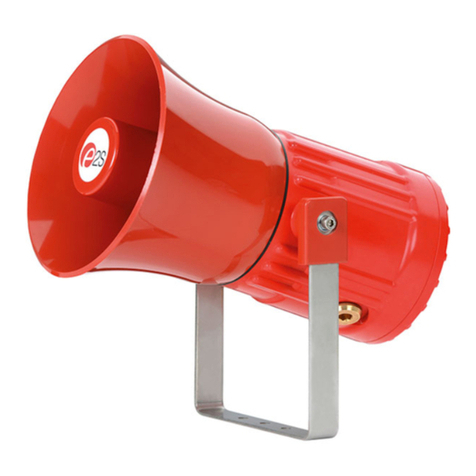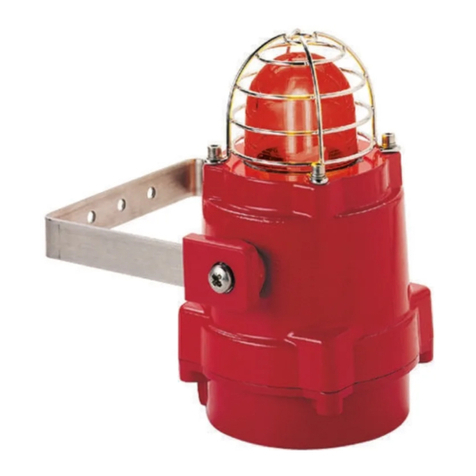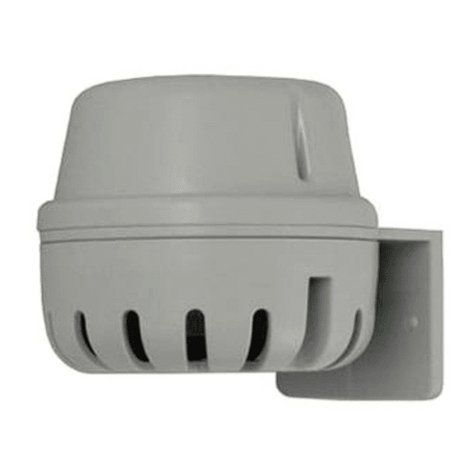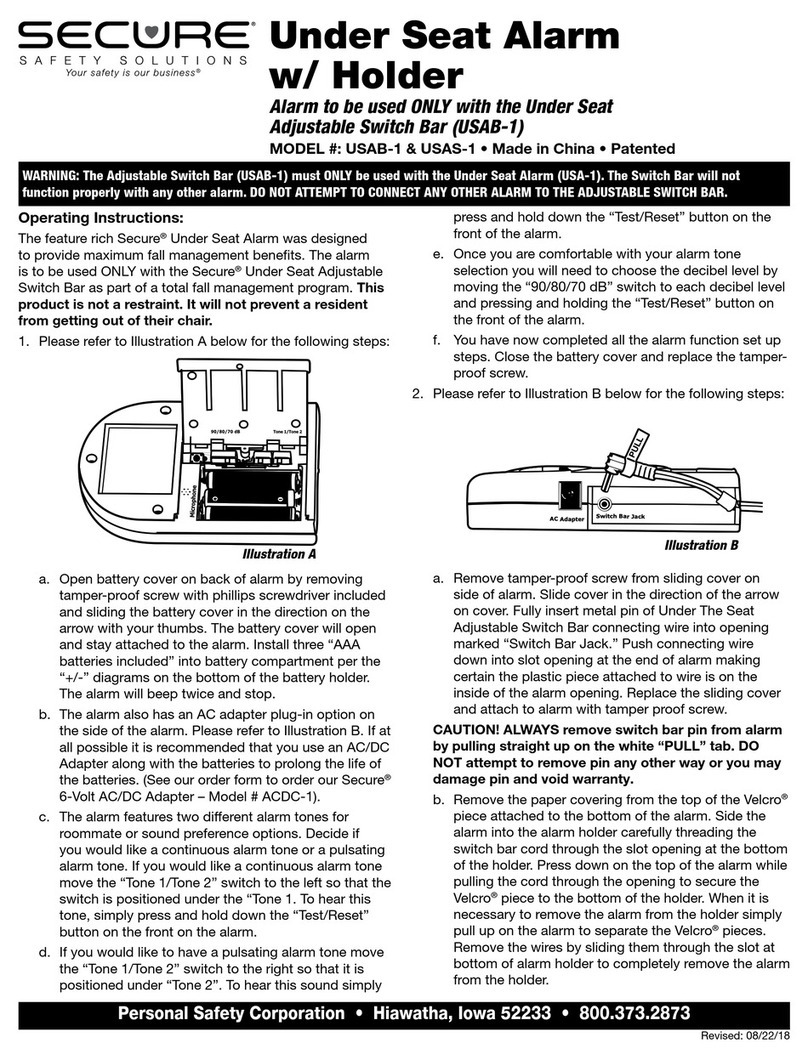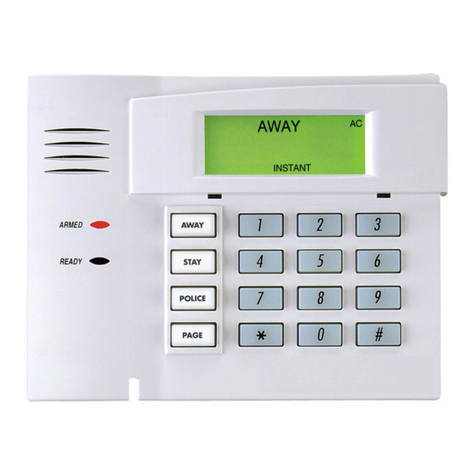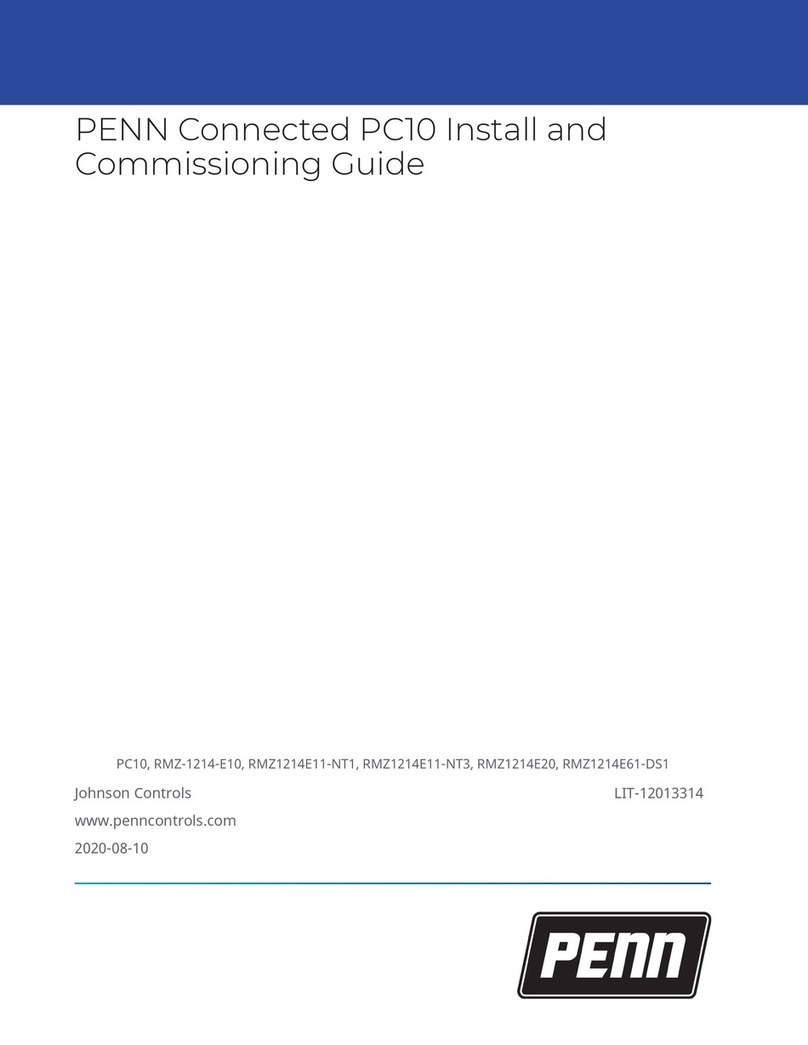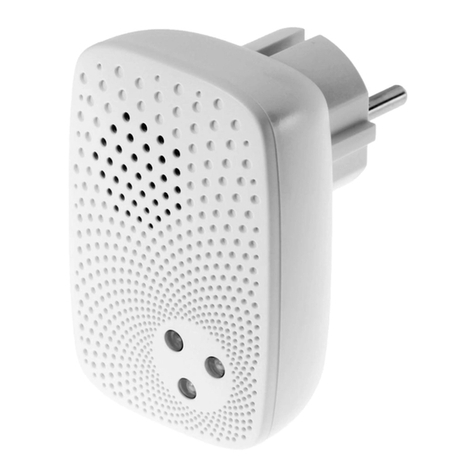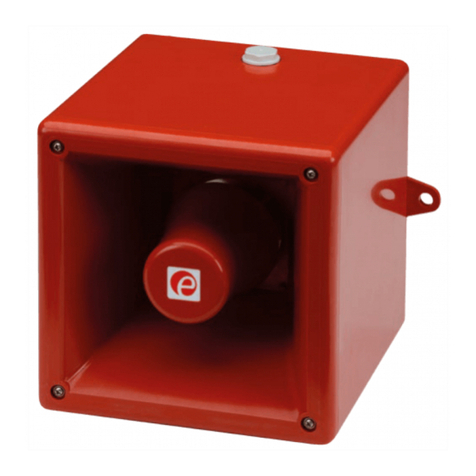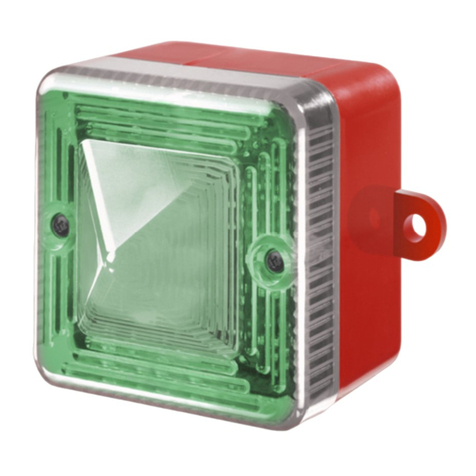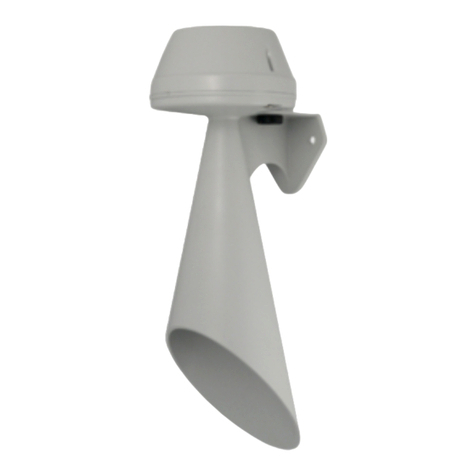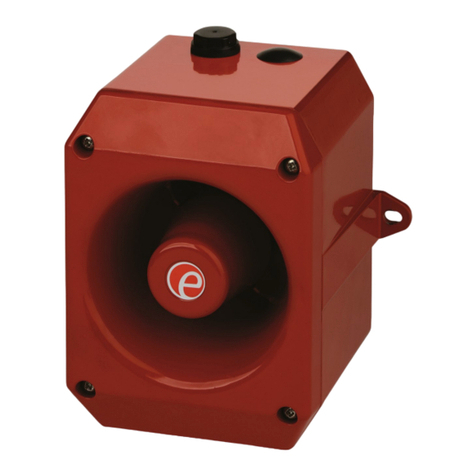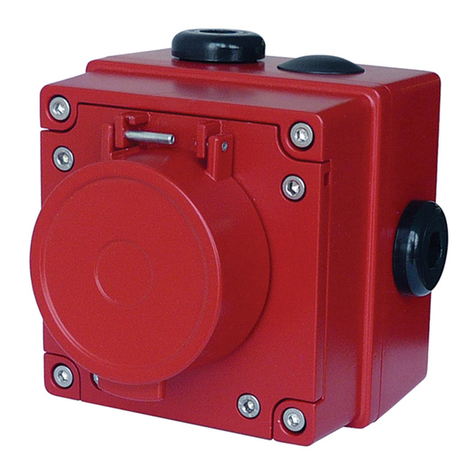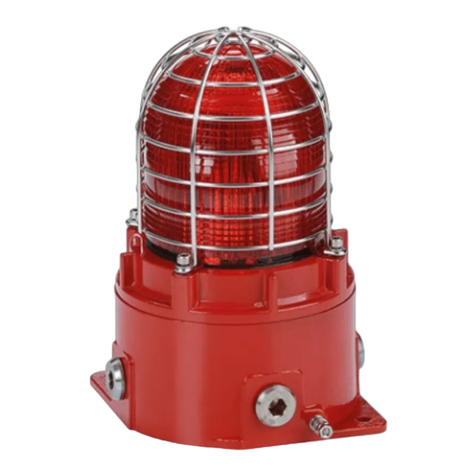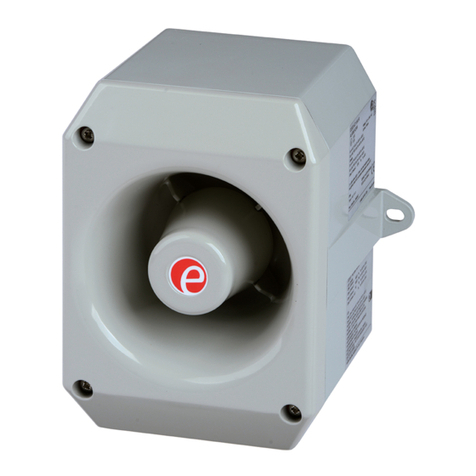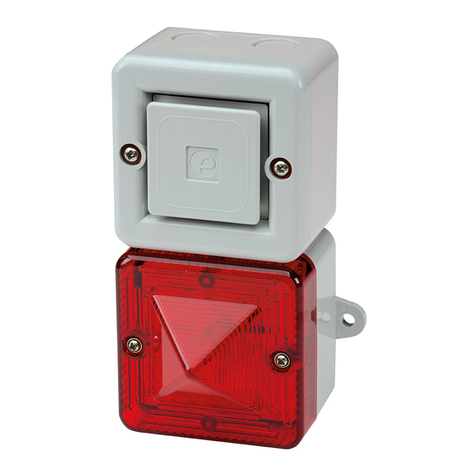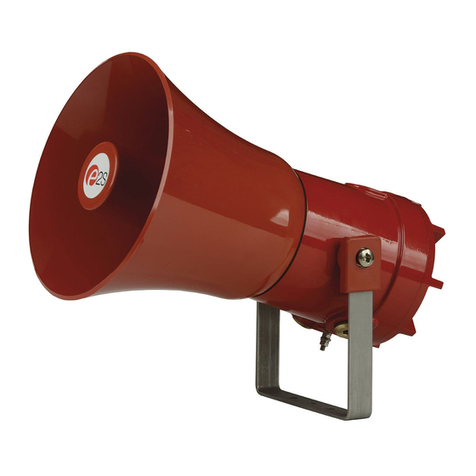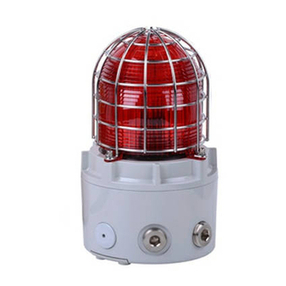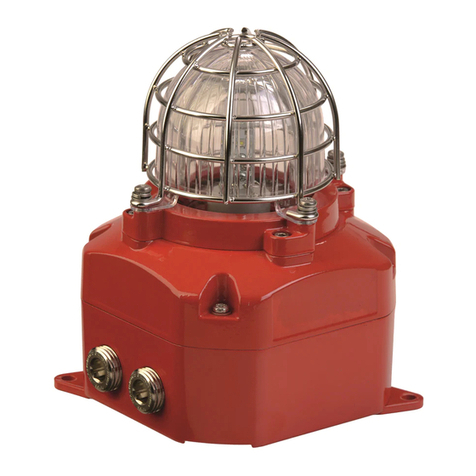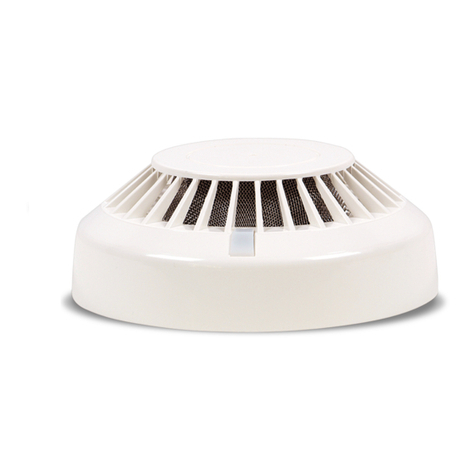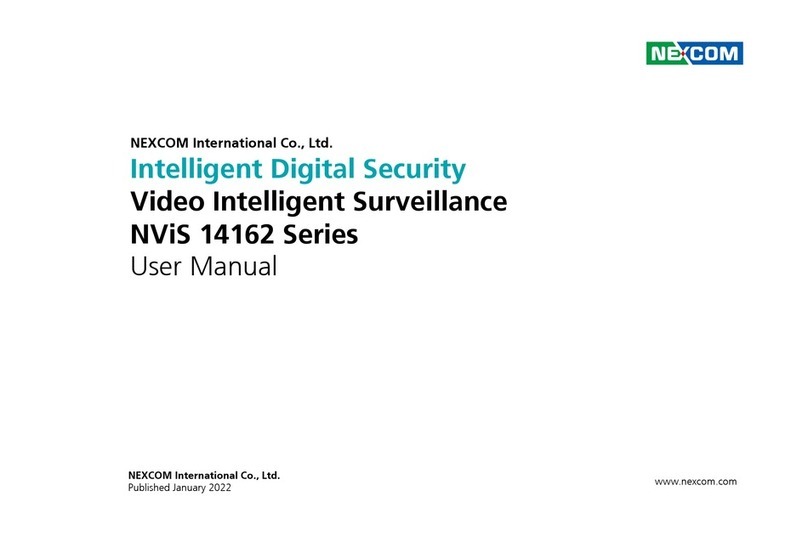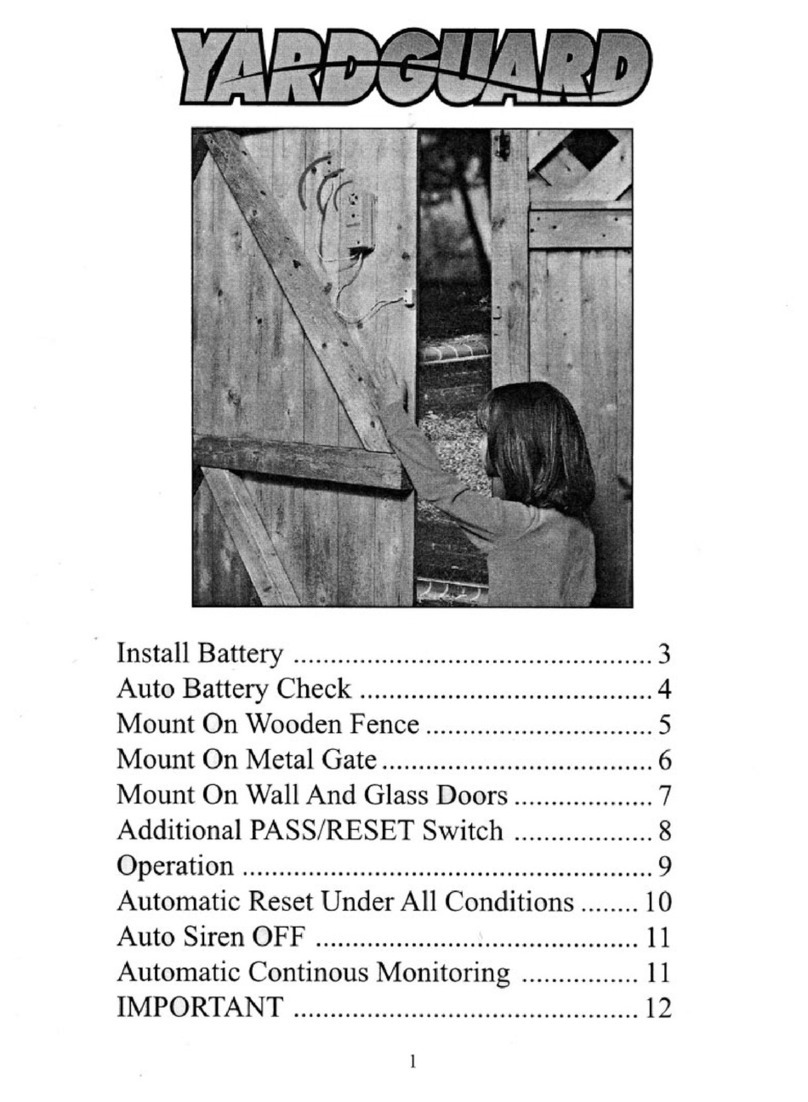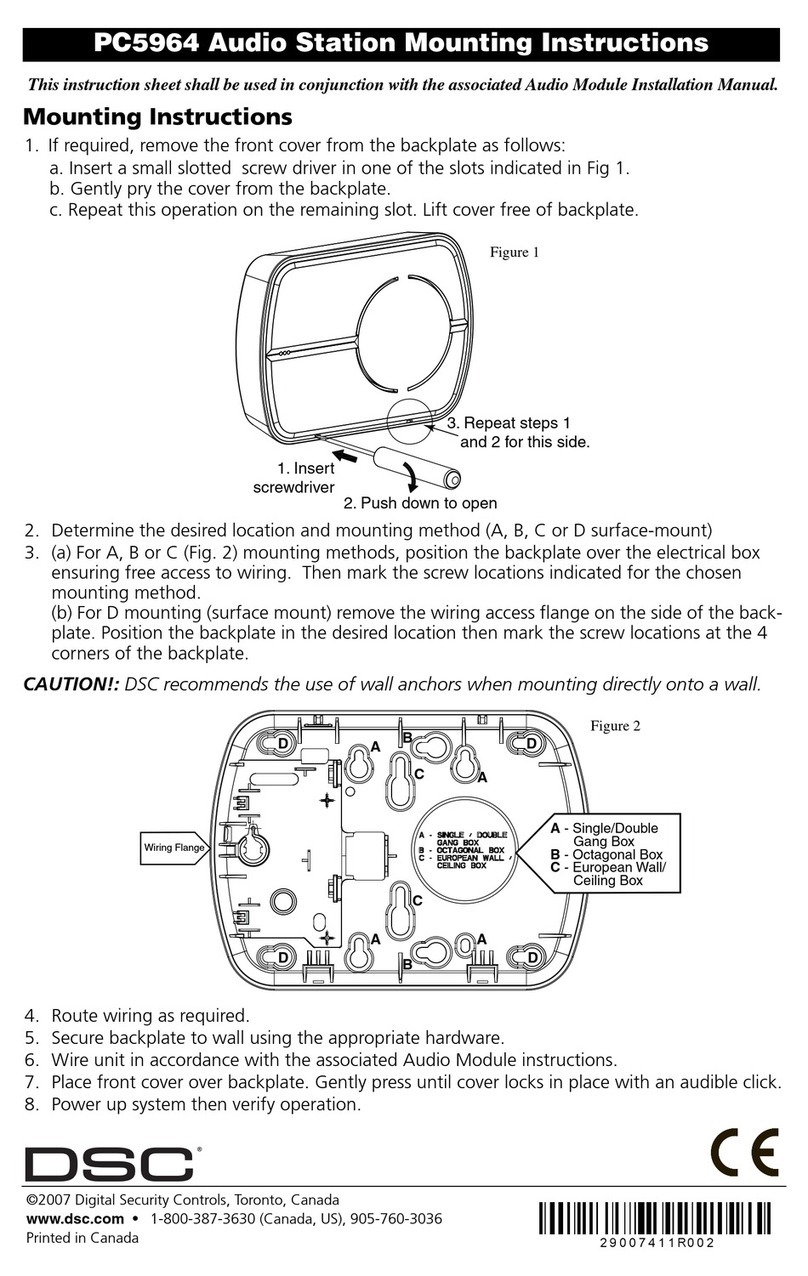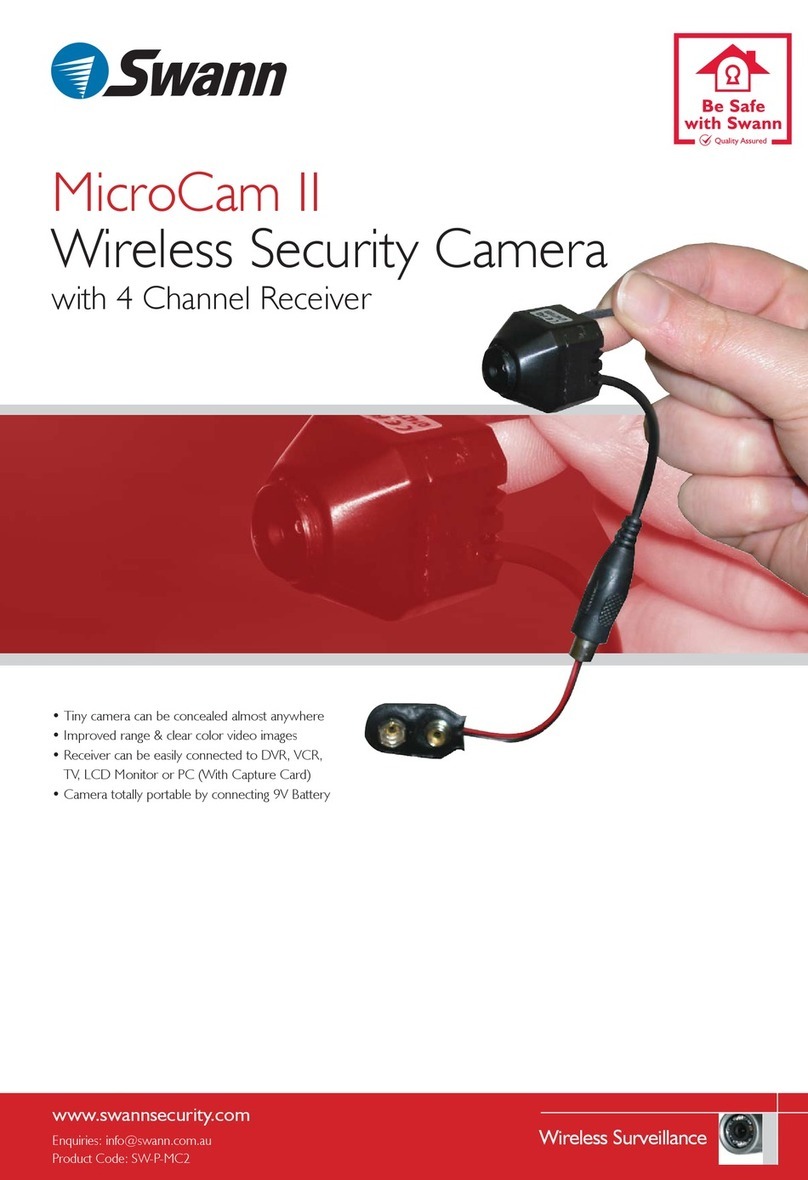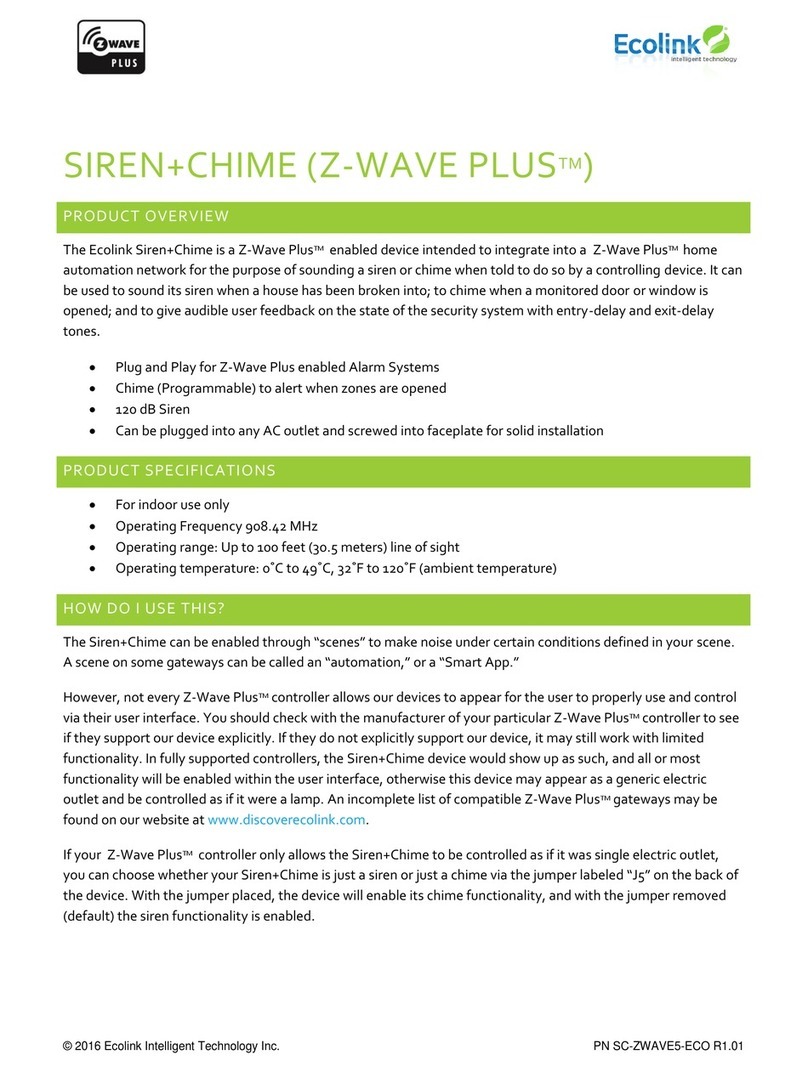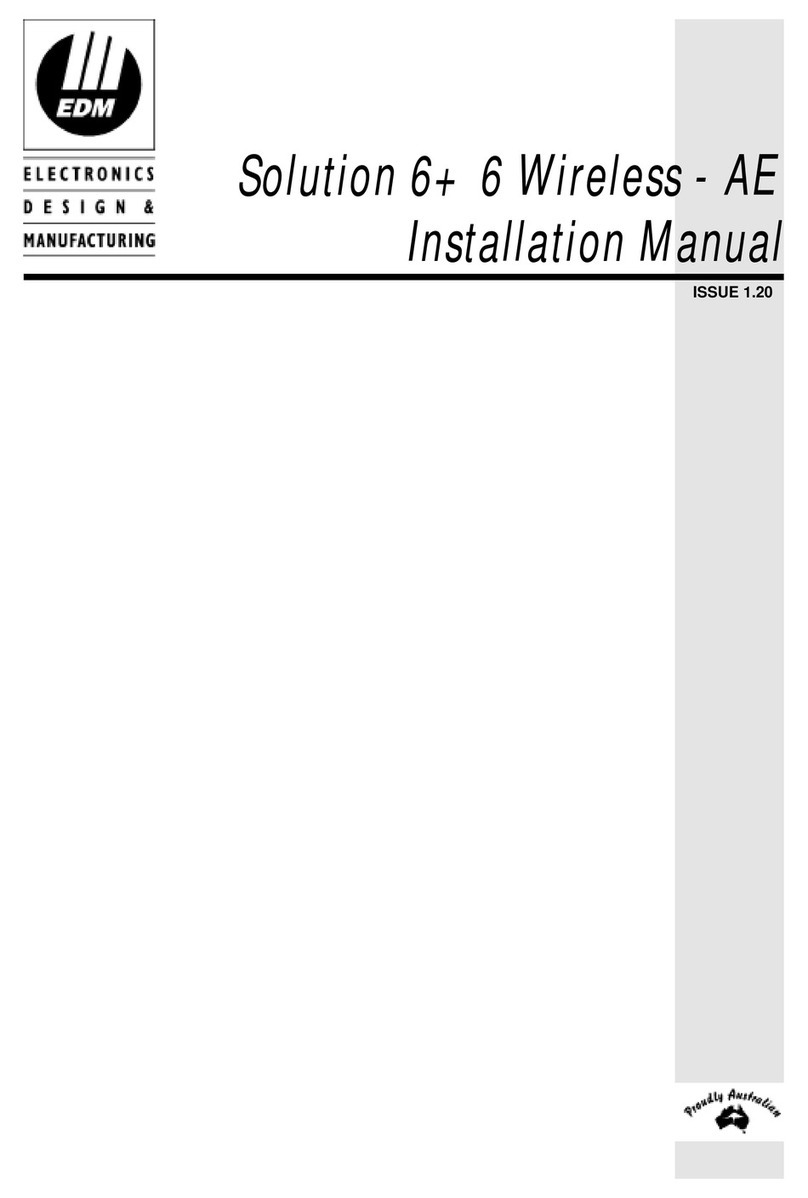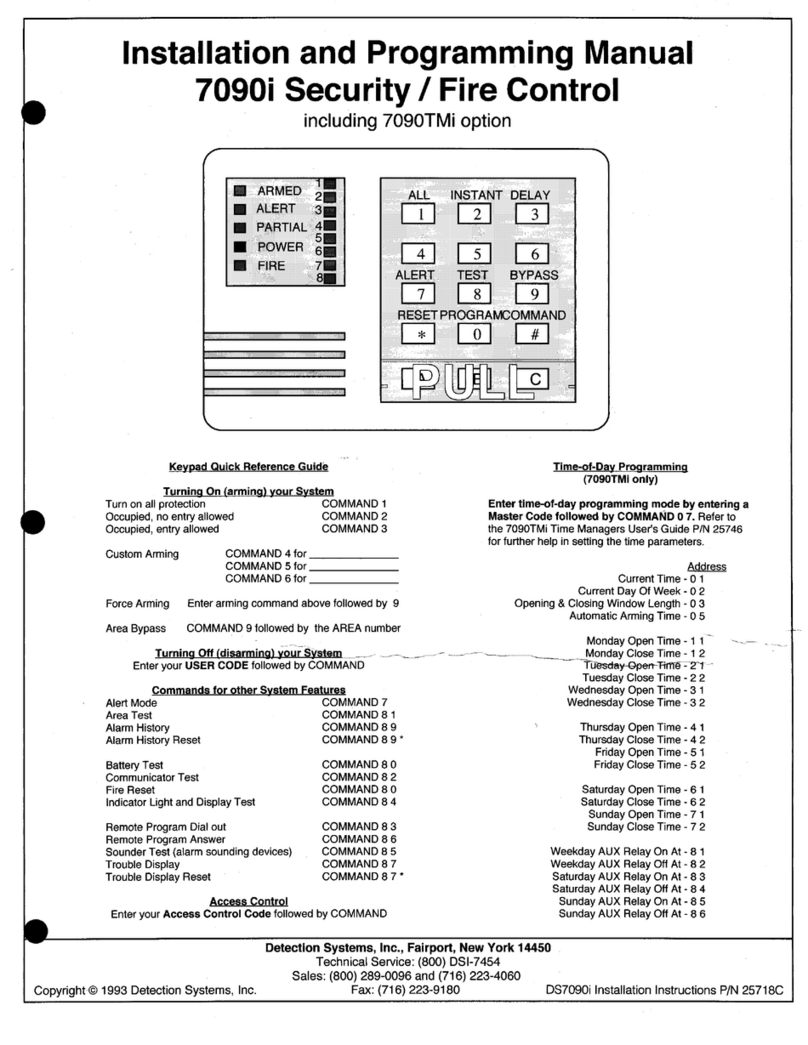
European Safety Systems Ltd.
Impress House, Mansell Road, Acton, London W3 7QH
Document No. D211-00-611-IS
Issue 1
20-08-22
Sheet 4 of 9
++
S2 S3
S2
S3
L
N
E
C
S2
S3
+
-
E
The voltage drop depends on:
- The total current draw if the devices installed on this
cable run
- The wire size and total length of the cable run,
determining the total resistance of this cable run
- The minimum output voltage supplied by the power
supply
The voltage drop and input voltage at the point of use can be
calculated as follows:
Total Wire resistance =
Wire resistance / 1000ft x length of cable run x 2
(length of cable run needs to be multiplied by two to account
for two wires going to and from the unit)
Total current draw =
Current draw per unit x number of units
Voltage Drop = Total current draw x Total wire resistance
Minimum output of power supply =
Min. voltage at point of use + voltage drop
For ambient temperatures over +45ºC the cable entry
temperature may exceed +70ºC. Therefore suitable heat
resisting cables and cable glands, rated to min. 75ºC must be
used.
If a high IP (Ingress Protection) rating is required then a
suitable sealing washer must be fitted under the cable glands
or blanking plugs.
For use in explosive dust atmospheres, a minimum ingress
protection rating of IP6X must be maintained.
For use in explosive gas atmospheres, a minimum ingress
protection rating of IP54 must be maintained.
NPT plugs should be greased before insertion.
8) Cable Connections
Electrical connections are to be made into the terminal blocks
on the PCBA located in the enclosure. See section 6 of this
manual for access to the enclosure.
Wires having a cross sectional area between 0.5 mm² to
2.5mm² can be connected to each terminal way. If an input
and output wire is required the 2-off Live/Neutral or +/-
terminals can be used. If fitting 2-off wires to one terminal way
the sum of the 2-off wires must be a maximum cross sectional
area of 2.5mm². Strip wires to 8mm. Wires may also be fitted
using ferrules. Terminal screws need to be tightened down
with a tightening torque of 0.56 Nm / 5 Lb-in. When
connecting wires to the terminals great care should be taken
to dress the wires so that when the cover is inserted into the
chamber the wires do not exert excess pressure on the
terminal blocks. This is particularly important when using
cables with large cross sectional areas such as 2.5mm².
9) AC Wiring
The Strobe is powered via factory installed wires connected to
the sounder. The wires connecting the alarm horn and strobe
can be removed if the user wishes to power the strobe
separately.
For further wiring schematics refer to document D211-06-611
Fig 4. AC Terminals
10) DC Wiring
The Strobe is powered via factory installed wires connected to
the alarm horn. The wires connecting the alarm horn and strobe
can be removed if the user wishes to power the strobe
separately.
For further wiring schematics refer to document D211-06-611
Fig. 6 DC Terminals
11) Earthing
The unit has both internal and external earth terminals, (please
see fig 2).
Internal earthing connections should be made to the internal
earth terminal on the PCBA, (please see fig 4 for AC, fig 6 for
DC). The earth conductor should be at least equal in size and
rating to the incoming power conductors. The internal earth
bonding wire connects the PCBA earth terminal to the internal
earth terminal in the enclosure back box.
External earth connections should be made to the M5 earth
stud, using a ring crimp terminal to secure the earth conductor
to the earth stud. The external earth conductor should be at
least 4mm2 in size. The external earth crimp ring should be
located between the two M5 plain washers provided and
securely locked down with the M5 spring washer and M5 nut.
DC Alarm Horn
Terminals
